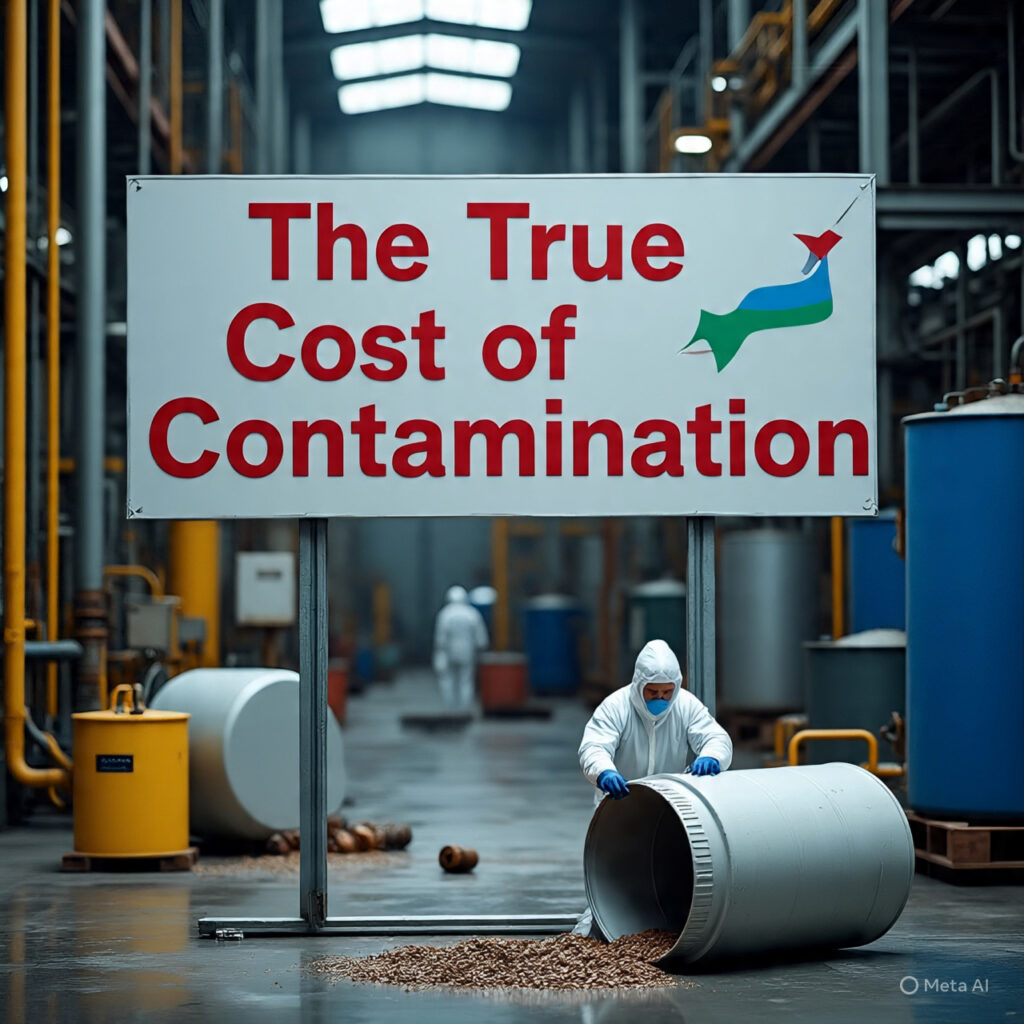In pharmaceutical and medical device production, contamination is far more than an isolated event. It represents a breakdown in control — one that impacts every layer of manufacturing, from operations and infrastructure to reputation and regulatory compliance. While the immediate financial hit from a lost batch is measurable, the broader consequences often extend well beyond the initial incident.
The Expanding Impact of Recovery Efforts
When contamination occurs, remediation rarely ends with surface cleaning. It typically requires full-scale investigations, sterilization procedures, and process revalidation. These steps halt production, disrupt scheduling, and consume significant resources. For many organizations, the indirect costs of recovery — additional testing, disposal of affected materials, and repeated validation — can rival or exceed the cost of the lost batch itself.
Extended downtime also means delayed product releases, which can have cascading effects on customer commitments and market availability. Every hour spent in remediation equates to lost production time and diminished revenue potential.
Supply Chain Consequences
Contamination doesn’t stay contained within the production floor — it ripples through the entire supply network. Products suspected of being affected often undergo quarantine until testing confirms safety and compliance. These delays disrupt inventory flow and may create shortages downstream.
In industries dependent on consistent supply, such as healthcare, even short-term interruptions can be critical. Hospitals and distributors may face backorders or product rationing, forcing them to find substitutes or delay treatments. This kind of disruption can weaken customer trust and complicate future demand forecasting.
Equipment and Infrastructure Wear
Aggressive cleaning and sterilization procedures — while necessary — can have damaging effects on production equipment. High concentrations of disinfectants or repeated exposure to sterilants can degrade seals, filters, tubing, and other sensitive materials. Over time, these elements lose integrity, leading to premature equipment failure or reduced performance.
Replacing degraded components or requalifying equipment introduces additional costs. In some cases, entire systems must be replaced to ensure regulatory compliance, resulting in unplanned capital expenditures that strain operating budgets.
Reputational and Regulatory Fallout
Few events attract regulatory scrutiny faster than contamination. Whether or not a recall follows, quality and compliance teams must often produce detailed root cause analyses, corrective action plans, and revalidation documentation. This process consumes time and personnel resources and can temporarily slow other production initiatives.
The reputational impact is harder to quantify but just as serious. Clients and investors may question the robustness of quality systems, while regulators may impose increased oversight. Recovering lost confidence takes time, transparency, and often the expense of third-party audits or independent verification programs.
Revealing System Weaknesses
A contamination event often exposes weaknesses that were previously hidden. Gaps in facility design, lapses in environmental monitoring, or inconsistencies in training can all contribute. Once uncovered, these issues frequently demand systemic corrections that go far beyond the original incident — such as revising airflow systems, updating gowning protocols, or retraining entire departments.
Implementing these improvements is resource-intensive but critical. Facilities that take a proactive approach after contamination tend to emerge more resilient, with tighter controls and better long-term reliability.
Prevention as a Core Strategy
The most effective way to manage contamination risk is to prevent it altogether. Prevention requires a cultural shift — one that views contamination control as a strategic foundation, not a reactionary measure. Consistent training, predictive monitoring, and regular process audits form the backbone of a sustainable prevention program.
Manufacturers that embed contamination awareness into daily operations not only reduce incidents but also strengthen their overall quality posture. In a competitive and highly regulated industry, prevention isn’t just about maintaining compliance — it’s about preserving trust, protecting patients, and ensuring the longevity of the business itself.
For a deeper dive into how contamination-related batch failures translate into hidden operational and financial risks, consult the accompanying resource from technical service provider, Scientific Safety Alliance.


